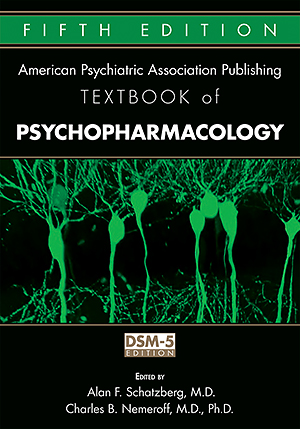Chapter 21.Ketamine
Sections
Excerpt
Ketamine emerged from the exploration of phencyclidine (PCP) derivatives suitable for anesthetic use in humans, and its discovery in 1962 is attributed to Parke-Davis Labs and Dr. Calvin Lee Stevens, a professor of organic chemistry at Wayne State University (Domino et al. 1965). Following approval by the U.S. Food and Drug Administration (FDA) in 1970, the drug was used as a battlefield anesthetic for American soldiers during the Vietnam War (Jansen 2000). Over the next several decades, as ketamine gained recognition for its dissociative properties, reports of its nonmedical use began to emerge, ultimately resulting in federal government classification of the drug as a Schedule III controlled substance in August 1999 (Ahmed and Petchkovsky 1980; Graeme 2000; Shomer 1992). Today ketamine abuse is prevalent internationally, especially in parts of Asia, where it has been considered a long-standing problem, albeit one that appears to be stabilizing (United Nations Office on Drugs and Crime 2014). Countries such as the United Kingdom have seen a decrease in ketamine use but an increase in people seeking treatment for ketamine use. Medically, ketamine continues to be widely used as a general anesthetic in specific populations and also as an analgesic for pain unresponsive to standard treatments (Persson 2013). Psychiatric applications of ketamine are currently an area of intense investigation and encompass its use in treatment-resistant depression, as an antisuicidal agent, as an adjunct to electroconvulsive therapy (ECT), in obsessive-compulsive disorder (OCD), in posttraumatic stress disorder (PTSD), and as a pharmacological model of psychosis.
Access content
To read the fulltext, please use one of the options below to sign in or purchase access.- Personal login
- Institutional Login
- Sign in via OpenAthens
- Register for access
-
Please login/register if you wish to pair your device and check access availability.
Not a subscriber?
PsychiatryOnline subscription options offer access to the DSM-5 library, books, journals, CME, and patient resources. This all-in-one virtual library provides psychiatrists and mental health professionals with key resources for diagnosis, treatment, research, and professional development.
Need more help? PsychiatryOnline Customer Service may be reached by emailing [email protected] or by calling 800-368-5777 (in the U.S.) or 703-907-7322 (outside the U.S.).



